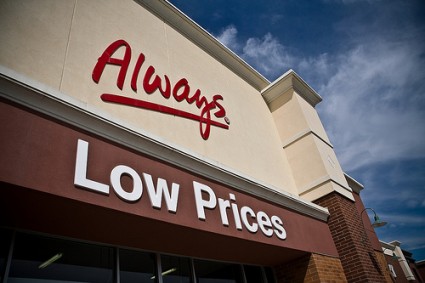 Local food gets the Wal-Mart treatment. One of the most important historic developments in the food economy is embodied in this statistic: in 1900, 40 percent of every dollar spent on food went to the farmer or rancher while the rest was split between inputs and distribution. Now? 7 cents on the dollar goes to the producer and 73 cents goes just to distribution. That’s worth keeping in mind when you read things like this:
Local food gets the Wal-Mart treatment. One of the most important historic developments in the food economy is embodied in this statistic: in 1900, 40 percent of every dollar spent on food went to the farmer or rancher while the rest was split between inputs and distribution. Now? 7 cents on the dollar goes to the producer and 73 cents goes just to distribution. That’s worth keeping in mind when you read things like this:
… Wal-Mart, now the nation’s largest supermarket chain as well as retailer, has gotten into the local scene, embarking on an effort to procure more of its produce from local growers.
Uh, oh.
Now, there is an intriguing (and concerning) wrinkle to all this. As the St Louis Dispatch piece linked above observes (and as Tom Philpott and I have observed many times before), one of the big obstacles to expanding local food systems is the collapse of local distribution infrastructure. There are often no wholesalers to buy and store, and no delivery infrastructure to move, produce locally. Conveniently, Wal-Mart has its own regional distribution system that rivals anything that ever existed before — why reinvent the wheel (again). So, it’s only natural for them jump in:
[T]he company is considering how its vast networking could lead to better distribution of local food to local consumers.
“If we have a truck coming to our store with a load of goods, does the truck go back to the (distribution center) empty, or is there some useful activity for it?” [Wal-Mart spokesman Bill] Wertz explained.
For Diane and Tim Rice, who farm 300 acres in Brunswick, that question found an answer.
“They had empty trucks going right by our place,” Tim Rice said.
And so, the Rices’ products find their way to Wal-Mart stores throughout the state, and their farm has grown, employing 25 people in a fading rural town.
The old “don’t let a truck roll empty” trick is, of course, an old one and used by companies large and small — Gary Hirshberg, CEO of Stonyfield Farm, loves to talk about his “innovation” back in the ’80s of sharing delivery runs with competitors to remote Vermont towns as a crucial step in Stonyfield’s rise. But the idea, which from the above article Wal-Mart seems to encourage, that Wal-Mart itself could become the primary means in large swathes of the country of distributing local food is, to say the least, would not be a positive development.
The key to understanding why comes in the Wallace Center’s just-published Community Food Enterprise report. Funded by the Kellogg Foundation along with, intriguingly, The Gates Foundation (to this point, not known for an interest in bottom-up solutions), the CFE report contains case studies on 24 successful local food businesses. It is, in essence, a manual for building the local food economies that are imperative if we have any hope of shifting some of that 73 cents per dollar back to producers. Because, really, can there be any doubt that the last thing Wal-Mart will do is shift money away from itself and towards farmers? Indeed, once gas prices again begin an upward march, they’ll be faced with even greater reason to squeeze their suppliers.
It’s time we dropped “economies of scale” as the dominant business mantra, especially for the food system. Indeed, the CFE report observes that the huge split between distributor and producer revenues shows the enormous opportunity for local businesses. Suddenly, sprawling distribution networks seem like a competitive disadvantage.
The new mantra of business should be “the local multiplier effect” — which I talked about here — and measures the enhanced economic benefit of local ownership of businesses. So, while Wal-Mart will no doubt find ways to benefit from the spiking interest in local food, it’s the Community Food Enterprise’s case studies that provide the real roadmap to a robust food system.



